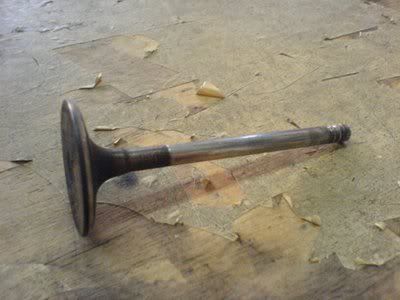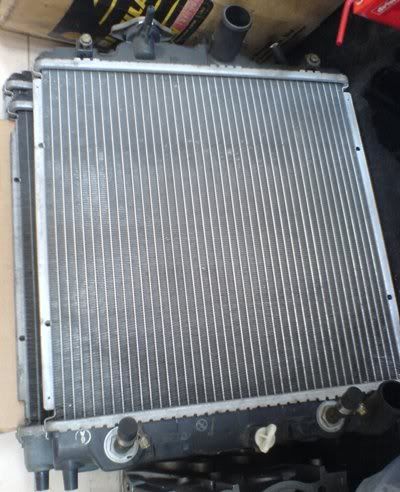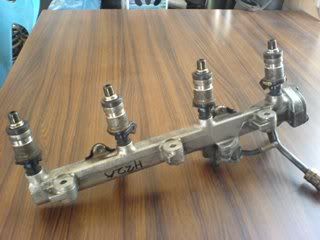- Joined
- Apr 18, 2006
- Messages
- 3,677
- Points
- 1,663
Just thought it'd be a nice idea to compile photo's of parts in under the hood. I hope everyone contributes to make this a sucessful information thread. Thanks to hattech-v for the photos of the piston oil sprayers , I really didn't know how it looked like apart from verbal explanations from a friend. Those photos gave me the idea of starting this thread.
So, submit some photos, and please do a short writeup on the part you photographed as well.
Hopefully as the pictures build up, I'll sort them into categories in the first post, picture will be credited to the poster, of course! (If the writeup is done by another person, it shall be credited accordingly)
Some general rules I wish to make (you can suggest changes if you feel it's not suitable)
1) photos are sized small enough, and not cause page stretching.
2) no catalogue photoes (due to copyright issues, I think it's better to refrain from catalogue photos.)
3) if you have a photo you took, but don't know about it, post it as well, as there may be other people who can help with the writeup.
Generally I think accuracy would be an issue, so I hope people will correct any mistakes as it comes along.. Heck! I don't know much either, so this thread will help me too!
Hopefully this will be an educational experience, since there's a bit of parts on the engine that I know by name and function, but don't know how it looks like. Since this is a honda forum, I think it's a good idea to limit it to photoes of honda parts. I'm thinking the pricing part is a bit stupid, and should be eliminated due to difficulties in sourcing prices, since it's all about supply and demand. Tell me what you guys think.
So, submit some photos, and please do a short writeup on the part you photographed as well.
Hopefully as the pictures build up, I'll sort them into categories in the first post, picture will be credited to the poster, of course! (If the writeup is done by another person, it shall be credited accordingly)
Some general rules I wish to make (you can suggest changes if you feel it's not suitable)
1) photos are sized small enough, and not cause page stretching.
2) no catalogue photoes (due to copyright issues, I think it's better to refrain from catalogue photos.)
3) if you have a photo you took, but don't know about it, post it as well, as there may be other people who can help with the writeup.
Generally I think accuracy would be an issue, so I hope people will correct any mistakes as it comes along.. Heck! I don't know much either, so this thread will help me too!
Hopefully this will be an educational experience, since there's a bit of parts on the engine that I know by name and function, but don't know how it looks like. Since this is a honda forum, I think it's a good idea to limit it to photoes of honda parts. I'm thinking the pricing part is a bit stupid, and should be eliminated due to difficulties in sourcing prices, since it's all about supply and demand. Tell me what you guys think.
The Valve

The valve sits in the head, and functions as a gate to let air in or out. The ones letting air in is called the intake valves, and the ones letting air out are called the exhaust valves. There are total of 16 valves in a typical honda engine. The bigger ones are the exhaust valves, and the smaller ones are the intake valves.
The Head

(I couldn't get a picture of a stripped down block yet. Still looking.)
A honda engine consists of layers. The topmost layer is the one you see the most.. The cam cover.
The second layer is the head, and it houses the cams, springs and retainers. This particular head came off a B18C, and is without the springs, retainer and cams. The third layer is the block, which houses the rods, pistons and crankshaft.
Radiator

The radiator is the most commonly known item on the car, since most owners do fill up it's water regularly. Although the stock one works well, there are other aftermarket radiators that you might have to consider once your engine power goes up and generate more heat. The radiator cap is spring loaded, and is set to release the excess pressure in the radiator as the water starts to expand due to heat.
Other makers of radiator are Koyo, ARC, and Effin QUOTE]
[Knock Sensor] - contributed by xxxx

The knock sensor is designed to sense when fuel is burning unevenly and causing "knocking" or irregular vibrations in the engine. The knock sensor consists of an electric coil that is wound around two ceramic rods with a magnet in the center. Engine vibration makes the ceramic rods vibrate. This disturbs the coils magnetic field and alters the current passing through the coil. This disturbance returns to the computer as a signal pattern that the computer analyzes. The computer then determines whether the vibrations are characteristic of engine knocking.
new - rm280 - rm350
used - rm80 - rm180
[Fuel Rail + Injectors] - shiroitenshi

A short writeup:
The long bar is the fuel rail. You can see the injectors mounted on the fuel rail. Coming from the H22A, the injectors are sized 280cc, saturated type. B16 and B18 uses 240cc injectors of the saturated type. Peak and hold types are available as well, but usually for bigger cc injectors, but there are cases of smaller injectors being of the peak and hold type. These two types have different connectors (if I'm not mistaken) and requires a part called a 'resistor box' or 'ballast' (not sure about the second term)
Purpose:
Purpose of the injectors are to spray fuel into the intake manifold. The fuel rail is pressurised, so the injectors just open and close in miliseconds to meter the exact fuel required depending on what the ECU says. A common trick is using an adjustable fuel regulator to make the injectors inject more fuel. Injectors have a max duty cycle (whatever that means! help?) of 80%, and it's unadvisable to go above that for consistency in metering fuel.
Price:
New - Unknown
Used - Unknown (friend quoted a price, but I think it's kinda random, and unsuitable as a benchmark)
Last edited:
